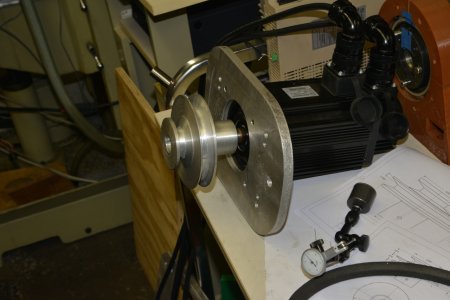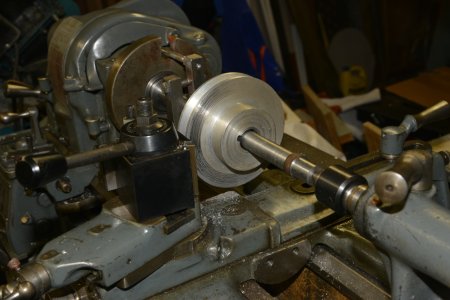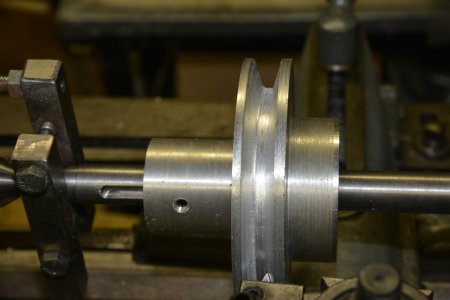calgaryguy
Chris
Couple of updates:
Removed 3 jaw chuck. Oscillation at 900rpm belt/gearbox setting is unchanged from what I observed and posted in the video. Tested all 7 other speeds available, some show next to no oscillation on the dial indicator, some show .001-.002. 900 RPM is the worst with about .005 oscillation as shown in the video. Oscillation at 1500rpm setting (top speed for this lathe) is almost nonexistant.
A side note on speeds on this lathe. The original 3 phase 1/3hp motor plate said something to the effect of 1650 rpm. Its since been replaced with a 1725rpm single phase motor. I havent measured spindle rpm yet with any sort of device but I suspect the actual gearbox/pulley speeds will be slightly higher than the original ones noted on the gearbox nameplate.
Removed 3 jaw chuck. Oscillation at 900rpm belt/gearbox setting is unchanged from what I observed and posted in the video. Tested all 7 other speeds available, some show next to no oscillation on the dial indicator, some show .001-.002. 900 RPM is the worst with about .005 oscillation as shown in the video. Oscillation at 1500rpm setting (top speed for this lathe) is almost nonexistant.
A side note on speeds on this lathe. The original 3 phase 1/3hp motor plate said something to the effect of 1650 rpm. Its since been replaced with a 1725rpm single phase motor. I havent measured spindle rpm yet with any sort of device but I suspect the actual gearbox/pulley speeds will be slightly higher than the original ones noted on the gearbox nameplate.
Last edited:





